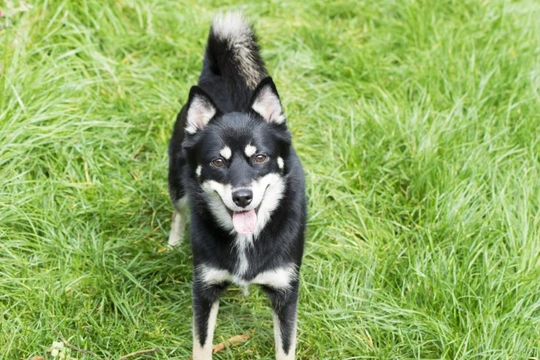
Is a Pomsky the perfect choice of dog for you?
A Pomsky is a crossbreed or hybrid dog type that is produced by crossing a Siberian husky with a Pomeranian, and this crossing is a particularly interesting one as the two parent breeds are so different in terms of their sizes and general traits. Pomeranians are a tiny toy dog breed, whilst Siberian huskies are medium to large dogs with amazingly high energy levels and a long working history.
This in turn makes the Pomsky a fairly unique dog type, even taking into account the huge popularity of hybrid dog types of all kinds that are in much demand today. If you are wondering if a Pomsky is a good choice of pet for you or want to find out more about what Pomskys are like in terms of their appearance and core traits, wonder no more.
In this article, we will provide a basic introduction to the Pomsky dog type to answer your questions. Read on to learn more.
Is the Pomsky a pedigree dog breed?
A Pomsky is a crossbreed dog, which means that they’re not classed as pedigrees and cannot be registered with The Kennel Club. This in turn means that you can’t independently research the bloodline or ancestry of a Pomsky – although if both of their parent dogs (or original ancestors) were pedigrees of their two respective breeds, you may be able to find out a little more.
There are no formal, set breed standards in place for hybrid dog types either, and so it can be hard for the Pomsky buyer to know what sort of core traits their chosen dog will possess. However, looking at the two parent breeds and their main traits can help to provide some direction in this respect.
Are Pomskys expensive to buy and own?
The average advertised price for a Pomsky puppy offered for sale is around £1,032 – which is pretty high. Many pedigree dog breeds are less costly than this to buy, which means that the average Pomsky sale price sometimes raises eyebrows!
However, the Pomeranian dog itself is quite an expensive breed, with an average advertised price of £1,482 for a Kennel Club registered dog and £813 for a non-pedigree, and naturally, a rather expensive parent will make for a more expensive crossbreed puppy.
In terms of ownership costs, Pomskys are medium-sized dogs, and are very middle of the road in terms of their costs to own and care for. They’re not among the cheapest of dogs, but they aren’t hugely expensive to keep either.
What do Pomskys look like?
Like many hybrid dog types, Pomskys can be quite variable in terms of the sizes of individual dogs of this type. Pomskys stand on average between 25-38cm tall at the withers, and weigh between around 9-13kg.
Some Pomskys (even across pups from the same litter) will look a lot more like one of their two parent breeds than others, although second and subsequent generation crosses tend to become more and more uniform in terms of approaching a middle of the road appearance norm.
However, most Pomskys share a range of different traits that give them a typical spitz dog appearance, including a curled tail, long, wolf-like muzzle, pointed ears, and a thick, plush coat that tends to shed heavily.
Dogs of this type come in a variety of different coat colours and patterns, including all of the variants seen across both parent breeds and a mixture of the two as well. Many Pomskys also share the light, piercing blue eyes that many huskies possess, although it can be hard to tell if a blue-eyed puppy will retain this trait into adulthood.
What sort of temperament do Pomskys have?
Pomskys can be quite high-maintenance dogs because they tend to inherit the boundless energy levels and huge reserves of endurance of their Siberian husky ancestors, as well as potentially their propensity to wander and roam if they see something of interest!
The importance of providing enough exercise and mental stimulation for a Pomsky should not be overlooked, and they are a good fit for active owners that like to do plenty of walking, physical activity, and spend lots of time outdoors.
Pomskys can be left on their own for short periods of time without becoming bored or destructive, but they don’t tolerate long periods of time with nothing to do and no one around for company.
In terms of intelligence, Pomskys fall around the middle of the pack, but they do get bored easily which can translate into a relatively short attention span for training. However, they tend to be around average in terms of their capacity for training, and assuming that you keep sessions short, varied and interesting, Pomskys are usually quite receptive to learning new skills.
Dogs of this type maintain a fairly young and playful outlook throughout their lives, and they can be very comical and entertaining too. They tend to get on well with older children who know how to handle and respect a dog, but may find young or unruly children concerning, which can lead to unpredictable responses to them.
If you are considering buying a Pomsky, it is important to ensure that your yard or garden is well fenced to keep the dog securely on the right side of it, and to train them for good recall from an early age to curb their potential propensity for roaming.



